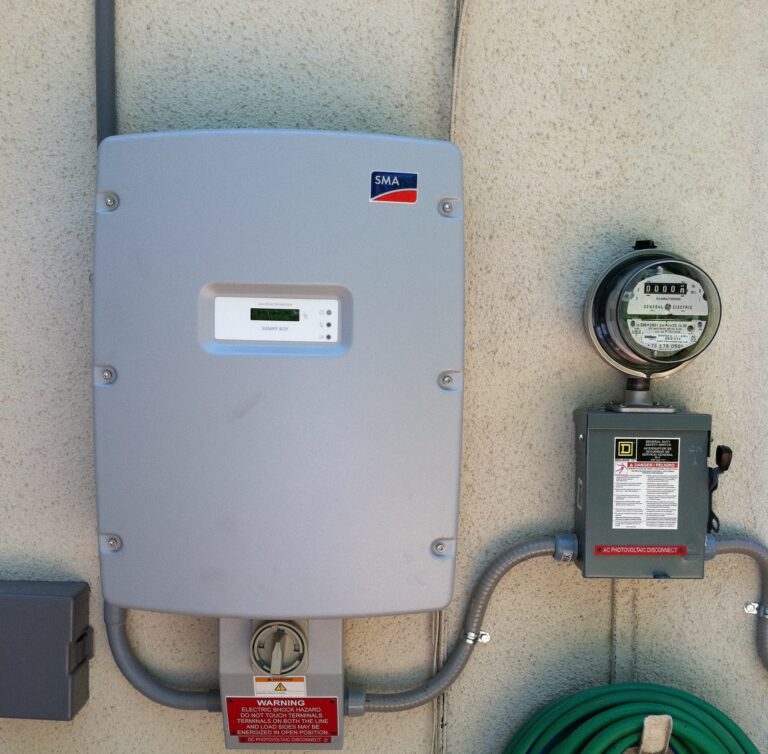Understanding the Role of Solar Inverters in Home Solar Systems
Solar energy has become a cornerstone of the modern push toward renewable energy. As more homeowners turn to solar power

In the dynamic realm of renewable energy, solar power stands out as a beacon of sustainability and efficiency. At the heart of any solar energy system lies a key player: the inverter. While solar panels capture sunlight and convert it into direct current (DC), inverters play a pivotal role in transforming that DC into the alternating current (AC) required to power our homes and businesses. In this comprehensive blog post, we will delve into the intricacies of what an inverter does for a solar system, exploring its functions, types, and the critical role it plays in unlocking the full potential of clean and renewable solar energy.
Understanding the Basics
1.1 Solar Panel Output:
1.2 The Need for Conversion:
Section 2: The Functions of an Inverter
2.1 DC to AC Conversion:
2.2 Synchronization with the Grid:
2.3 Voltage Regulation:
2.4 Monitoring and Optimization:
Section 3: Types of Inverters
3.1 String Inverters:
3.2 Microinverters:
3.3 Central Inverters:
3.4 Power Optimizers:
Section 4: Importance of Inverter Efficiency
4.1 Maximizing Energy Harvesting:
4.2 Reducing Energy Losses:
Section 5: Overcoming Challenges with Inverter Technology
5.1 Shading and Performance Issues:
5.2 Temperature Considerations:
5.3 Monitoring and Maintenance:
Section 6: Conclusion
In conclusion, the inverter serves as the unsung hero in the realm of solar energy, bridging the gap between sunlight and the devices that power our daily lives. Its role in converting DC to AC, synchronizing with the electrical grid, regulating voltage, and monitoring system performance is indispensable for the success of solar installations. As technology continues to advance, the diversity of inverter types and the improvements in efficiency further enhance the appeal of solar energy as a viable and sustainable power source. Whether you opt for string inverters, microinverters, or power optimizers, understanding the nuances of inverter technology empowers individuals and businesses to make informed decisions, unlocking the full potential of clean, renewable solar power for a brighter and more sustainable future.
Bring you the latest news and in-depth information on the solar energy.
Solar energy has become a cornerstone of the modern push toward renewable energy. As more homeowners turn to solar power
California is embroiled in a dispute over who can install battery systems for solar setups. A new ruling by the
As the summer heat waves roll in, many homeowners find themselves relying heavily on air conditioning to stay comfortable. While
As solar energy becomes increasingly popular, homeowners are more eager than ever to harness the power of the sun. However,
As the world continues to grapple with the effects of climate change and the need for sustainable energy sources, solar
As the world continues to shift toward renewable energy, more homeowners and businesses are investing in solar panels. A significant
In the fast-paced world of business, where competition is fierce and the market is ever-evolving, standing out and maintaining a
As the world shifts towards renewable energy, solar panels have become a popular choice for both residential and commercial properties.
Solar energy has become a cornerstone of the global movement toward sustainable energy solutions. As more homes and businesses install
In today’s highly competitive business landscape, customer referrals stand as one of the most potent tools for growth and success.
The solar industry has seen significant growth over the past decade, with more homeowners and businesses investing in solar energy
Introduction In the pursuit of renewable energy solutions, solar panels have become a cornerstone for residential and commercial energy
In the burgeoning landscape of renewable energy, solar power systems have emerged as a cornerstone for homeowners seeking energy independence
In today’s dynamic and competitive business environment, the culture of a company is a critical pillar of its identity and
The solar industry has grown exponentially over the past decade, with installations becoming a common sight on residential and commercial
Installing a solar power system is an exciting journey towards sustainability and energy independence. However, one of the final steps
The Roots of Earth Day Every year on April 22nd, Earth Day reminds us of the collective responsibility we hold
In the rapidly evolving solar industry, businesses can sometimes fail, leaving customers with incomplete or malfunctioning solar systems. If you
The Distinction Between Solar Installers and Solar Service Technicians As the demand for renewable energy increases,
Upgrading your solar system’s cell kit is an essential step in maintaining efficient energy production and ensuring the longevity of
Solar eclipses are a spectacular phenomenon where the moon passes between the Earth and the sun, partially or entirely blocking
In California, the sun’s abundant energy is more than a natural blessing; it’s a powerful resource driving the state’s transition
Introduction Solar panels have become synonymous with sustainable energy, playing a critical role in the global transition towards cleaner power
As Easter approaches, children and parents alike prepare for the joyous tradition of hunting for eggs hidden by the enigmatic
Published on September 29, 2023 At EnergyAid, we’re dedicated to spreading knowledge about the importance
At EnergyAid, we’ve always strived to make a positive impact in the solar energy industry.
Owning solar panels is a forward-thinking choice that not only reduces your carbon footprint but